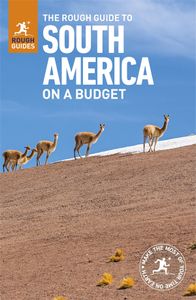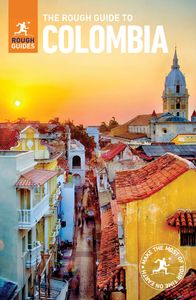Ciudad Perdida: tour guides and tips
As of 2008, the area has been safe from paramilitaries, but you can only do the hike as part of an organized group. There are four tour companies authorized to lead tours, all with offices in Santa Marta, the most reputable being Magic Tour (5 421 9429, www.trail.com/magictour), though you may find that guides from different companies swap clients to accommodate those who wish to do the tour in more or fewer days, and during low season the four companies pool clients. The official price of the tour is set at COP$650,000 and includes all meals, accommodation along the trail, the entrance fee to the ruins and transport to and from the trailhead. Guides generally don’t speak English. Groups consist of four to twelve hikers.
The hike can be done all year; the driest period is between late December and March, while during the wet months from May to November the trail can get exceedingly muddy. It’s a reasonably challenging trek lasting four to six days, and a reasonable level of physical fitness is required.
Expect to get wet at any time of the year and pack everything you’ll need, especially: sturdy footwear suitable for river crossings (either waterproof trekking sandals or hiking boots and flip-flops); 50 percent DEET insect repellent (not available in Colombia); water-purifying tablets; anti-malarial prophylactics (there’s low risk of malaria but if you want to err on the side of caution); waterproof bag and poncho, and sunscreen.
The hike
The trek covers 40km, with most hikers opting for the five-day version. You get picked up in Santa Marta for the three-hour drive to Machete, the village where the hike begins after lunch. From here it’s four to five hours to Camp 1 – mostly a steep uphill slog with a long, steep descent towards the camp. There’s a swimming hole close to the start of the trail and another at Camp 1, where there are hammocks with mosquito nets. Day two’s four- to five-hour hike to Camp 2 is an hour’s ascent, a steep hour’s descent, and an attractive flat stretch that takes you past a Kogi village. At the camp there’s good swimming in the river and relatively comfortable bunks with mosquito nets. Day three consists of a four-hour hike that includes a narrow path overlooking a sheer drop and ups and downs along a narrow jungle trail, and a bridge across the main river. Camp 3, Paraíso, tends to be the most crowded, and has hammocks, bunks and musty tents with mattresses. Weather permitting, some groups press on to the Ciudad Perdida in the afternoon (four-hour round trip), an hour’s ascent from Camp 3, most of it up a very steep bunch of uneven and slippery stone steps – particularly challenging on the way down. And then it’s there – your prize – stone terrace upon stone terrace, tranquil and overgrown with jungle, with splendid views of the main terrace from the military outpost. The alternative is to hike to Ciudad Perdida on the morning of day four. On your return, you either stay overnight in Camp 2 at the end of day four or, if you made it to Ciudad Perdida on day three, you make the eight- to nine-hour hike from Camp 3 back to Camp 1. Day five is then either a very early start and a gruelling seven-hour hike from Camp 2 back to Machete before lunch or – if you’re already at Camp 1 – a somewhat less gruelling four-hour slog, with the steepest part at the very beginning. Hearty victory lunch at Machete follows, and a transfer back to Santa Marta.
The Kogi Indians
Although now uninhabited, Ciudad Perdida is in many respects a living monument. It’s surrounded by villages of Kogi Indians, who call the revered site Teyuna. You may be able to interact with the Kogis as they drift on and off the main trail you’ll traverse as part of the trek. As it comprises only a fraction of the wilderness they call home, they are increasingly less present on this popular tourist trail. The men are recognizable by their long, black hair, white (or off-white) smocks and trousers, a woven purse worn across one shoulder and trusty póporo, the saliva-coated gourd holding the lime that activates the coca leaves they constantly chew. Women also dress in white, and both women and girls wear necklaces; only the men own póporo. About nine thousand Kogis are believed to inhabit the Sierra Nevada.
When flower power was in full bloom in the US in the 1970s, the Sierra Nevada became a major marijuana factory, and an estimated seventy percent of its native forests were burned to clear the way for untold amounts of the lucrative Santa Marta Gold strand. As the forest’s prime inhabitants, the Kogis suffered dearly from the arrival of so many fast-buck farmers, one of the reasons why they’re sceptical of the outside world; while Kogi children may well approach you, asking for sweets, don’t take pictures of adults without their permission.




















